Albert Bridge is a cast-iron bridge across the River Torrens at Frome Road, built in 1879.
The current bridge is not the first vehicular bridge built on this site. As Frome Road has been an important link between Adelaide and North Adelaide, a bridge suitable for horse-carts was erected in early years of British settlement. Unfortunately for Adelaide’s residents, this wooden bridge did not last long: it was washed away by floods in the 1840s. It was not replaced until 1861, and only then by a wooden pedestrian bridge. This bridge was also doomed to a short existence: it too was washed away by floods, this time in 1869.
In 1871, Adelaide Mayor Judah Solomon held a public meeting to determine the feasibility of building a new vehicular bridge at Frome Road. Men were employed to count the volume of traffic between 5am and 10pm over the City Bridge on King William Street for 6 straight days, to find out if another crossing point was justified. This endeavour found that the bridge was used by 21,023 foot passengers, 1,033 horsemen, 7,798 horse-drawn vehicles, 294 sheep and 7 cows: far more than expected. This did not even include the large number of animals which crossed the bridge before 5am, destined for market. Speakers at the meeting argued that an alternative path across the river for much of this traffic would pay for itself due to reduced upkeep costs of the City Bridge. As a result, the City Council endorsed the idea of a new bridge across the Torrens, and estimated its cost would be around £9000.
Progress on this new bridge stalled until 1878. A plan to reconstruct the recently disassembled City Bridge at this new location was suggested, but it was found to likely cost more than constructing an entirely new one. The tender for a new bridge was offered to John Grainger and Henry Worsley, with their design predicted to cost £8100. Grainger had just recently moved to South Australia from England, and he had a career designing many famous bridges around Australia, including Princes Bridge in Melbourne. The foundation stone of the bridge was laid by the Mayor of Adelaide Henry Scott on 20 August 1878, in front of a considerable gathering of Adelaide citizens.
The bridge itself is made mostly of cast-iron, imported from England, with stone abutments. Original plans intended to save money by utilizing concrete instead, but this was found to be visually unappealing. The bridge is 120 feet long (36.6m), with three spans: a middle span of 60 feet and 2 side spans of 30 feet each. The bridge’s piers each consist of 3 cylinders of decreasing diameter, filled with cement and sunk 5 metres below the riverbed’s surface. The first cylinder of the first pier was sunk ‘dry’: pumps and levees were used to dig the hole below the riverbed without the water being present. This turned out to be so expensive that the other cylinders were sunk with the aid of a diver instead. Once complete, the bridge was adorned with the Coat of Arms of the Corporation of Adelaide. Incidental costs meant that the final cost was closer to £9000 than the original estimate of £8100.
The bridge was officially opened on 7 May 1879, decorated with flags and flower arches for the ceremony. It was christened the Albert Bridge, after Queen Victoria’s late husband. Mayor William Buik proudly announced that this name ‘was revered in every part of the British Empire’. His wife, the Lady Mayoress Jane Buik, officially opened the bridge by smashing a Champagne bottle against its iron railings.
The Albert Bridge has remained largely intact since construction. In 1933, the wooden decking of the bridge was replaced with reinforced concrete to deal with the increased weight of motorised traffic, rather than horse-carts. This remodeling costs £1225, and was accurately predicted at the time to be the only necessary upkeep for 50 years. In 1980, Albert Bridge was inscribed on the SA Heritage Register. The deck was reinforced again in 1982, once more to deal with the increased weight and volume of vehicular traffic.
Most recently, Albert Bridge has been restored in 2018. The iron stringers and pillars have been reinforced to ensure the continued stability of the bridge, at a cost of $200,000.
Sources
Adelaide Park Lands and Squares, ‘Warnpangga/Park 10 Report’.
City of Adelaide, ‘2017-18 Integrated Business Plan’.
SA Heritage Places, Albert Bridge.
Adelaide Observer, “Proposed New Bridge over the Torrens”, 19 August 1871, p10.
The Advertiser, “Repairing Frome Road Bridge”, 19 July 1933, p10.
Evening Journal, “The Opening of the Albert Bridge,” 7 May 1879, p2.
The South Australian Advertiser, “The Albert Bridge”, 19 April 1879, p14.
South Australian Register, “Laying the Foundation-Stone on the Albert Bridge”, 21 August 1878, p4.
South Australian Register, “The Albert Bridge”, 29 January 1879, p6.


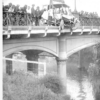

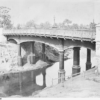
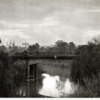
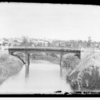
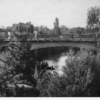

Comments